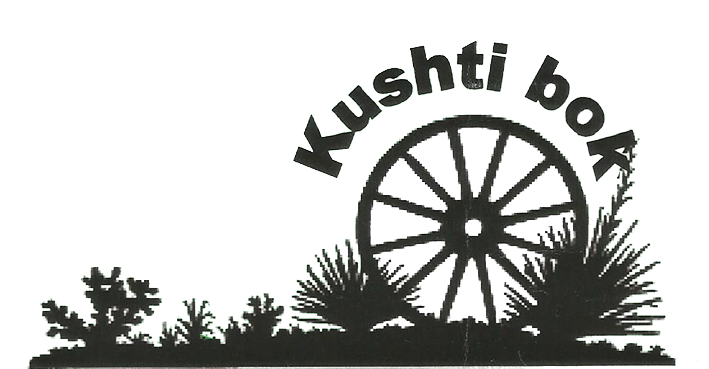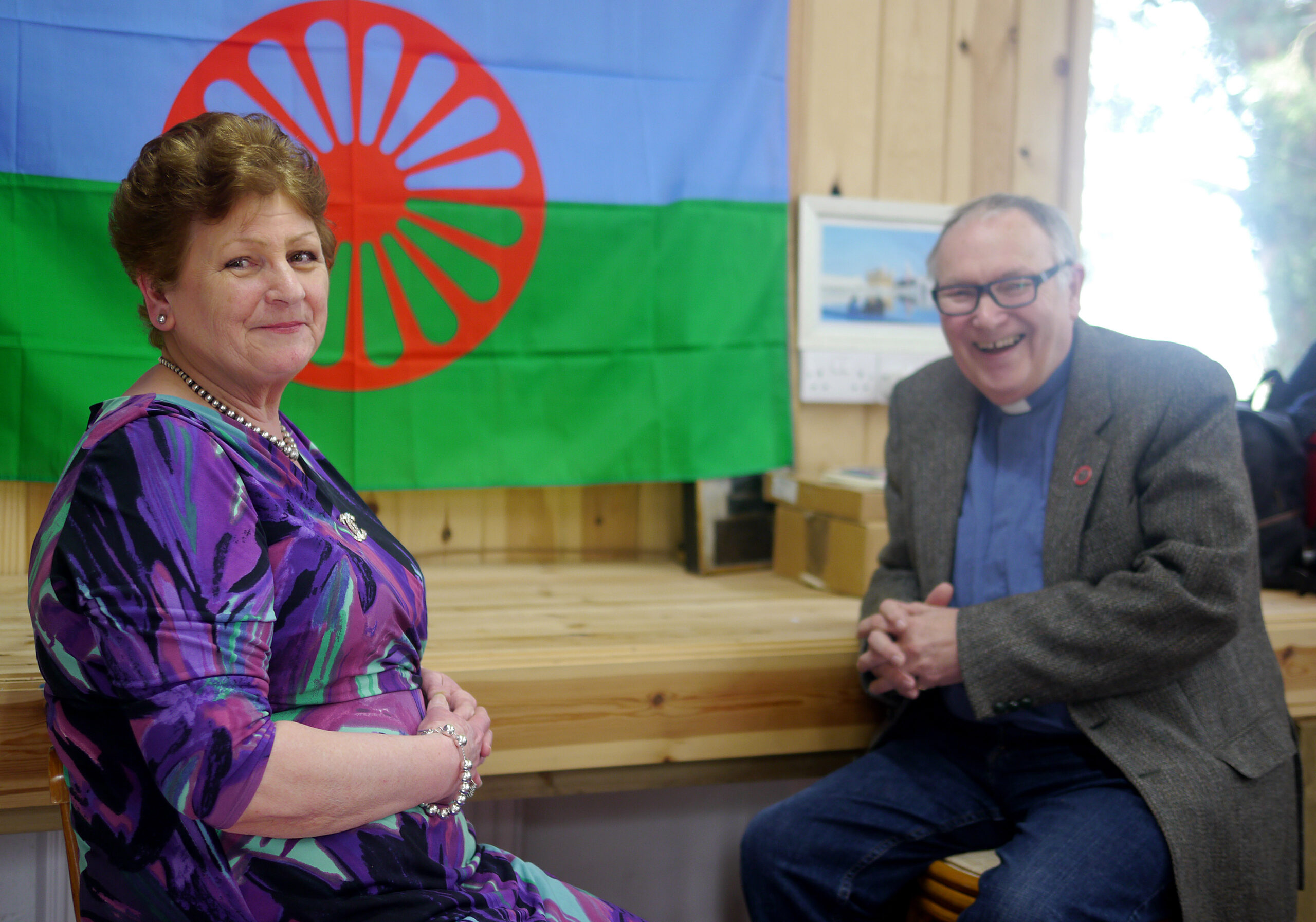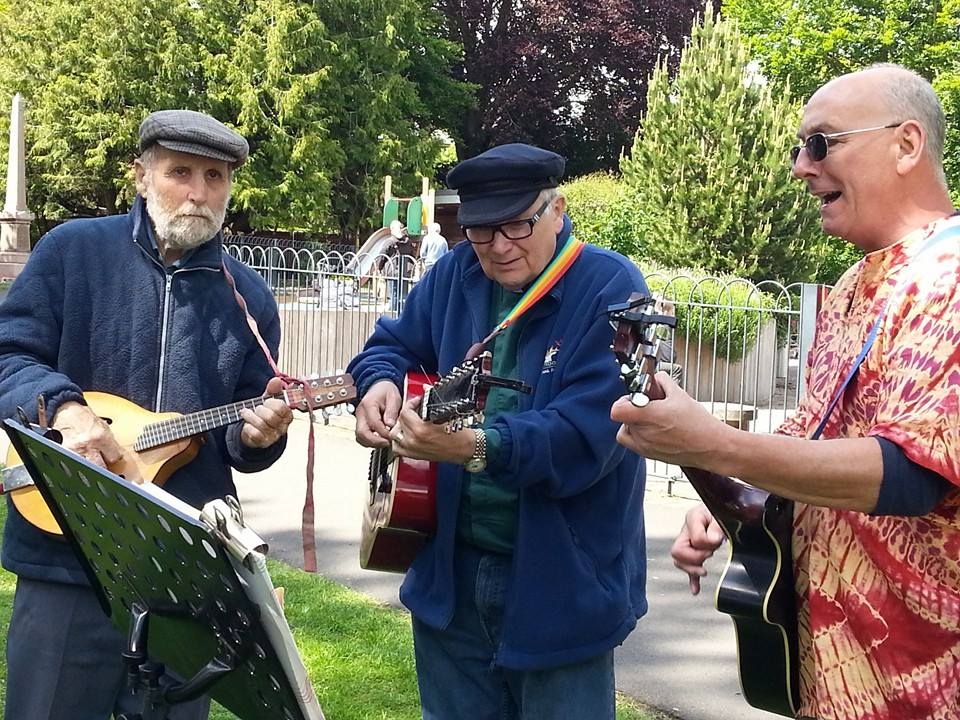Kushti Bok is the voice for Gypsy, Roma and Travelling people in Dorset, and for the last three years our Community Engagement Officer has worked closely with the organisation. We’re hoping that a strong relationship with Kushti Bok will lead to better representation of these communities in the records we store.

We’ve learnt a great deal about the history of GRT people in this area and the current challenges facing this most marginalised of groups. We worked with the Trustees on a bid to the National Lottery Heritage Fund for a project to attract new energy to the organisation and to celebrate the lives and heritage of GRT people in Dorset. This was successful, and the exciting project ‘Renewing the Legend Pole’ is underway. This will replace a damaged sculpture at Kingston Maurward College and will include a wide range of activities to benefit this community and spread the word about Kushti Bok’s important and varied work.
If you’d like to find out more about the heritage of GRT people, or perhaps your own GRT roots you could join us in Dorchester’s Borough Gardens on Sunday 26th June when Kushti Bok will be celebrating June as GRT History Month.
Meanwhile, we have a blog for you from Rev Roger Redding who was the Gypsy, Romany and Traveller Chaplain before his retirement. His ministry took him throughout the West Country – county borders don’t mean so much to Travelling people – and he still treasures the friends and memories he made. This is an edited version of an interview Rev Redding did with Betty Smith-Billington in March 2017…
—

“In 1997 I was made team rector of a group of parishes in Chalke Valley, a very rural parish. I’d been used to working on housing estates and in an inner city, so the countryside was a very different ministry. After a month I thought, ‘Well Lord, why have you put me here?’
Two weeks later I think I got my answer. I did my first Romany Gypsy funeral at Coombe Bissett. I was asked to do something I’ve never heard of; to ‘see the body in’ the night before. So I appeared at this traveller-owned site. There were a number of mobile homes there and this huge tin hut which belonged to Mr Cooper who had died. He was quite a character, he’d been off the road for 80 years. He lived in this corrugated iron structure with windows, similar to a Nissan hut. He did most of his cooking outside and his family lived round him with the horses and dogs. He’d obviously bought this piece of land just after the war as he realised that there were going to be difficulties for Gypsies and Travellers. In those days there wasn’t planning permission; you could buy land easily and settle on it. His nickname was Fur, because he used to say, ‘It’s too Fur over there.’
There were 50 to 60 people outside this hut. It had been stripped completely, and where his bedroom was they’d hung white cloths. He was laid in state with the coffin lid off, wearing his best clothes. What surprised me was the real deep mourning, like you’d see in the Middle East. People were crying and bashing themselves. At the end, a Romany lady said to me, ‘You haven’t had much to do with Travellers, have you, mate?’ In my heart something said, ‘From now on you jolly well will.‘
A few months afterwards, one of my parishioners in Bower Chalke, Laurie Bissett, said to me, ‘You’re interested in Gypsies, you ought to meet Dave Rawlings.’ On New Year’s Day we looked out of the window and saw this wonderful Gypsy vardo* going up the road with the flap cut behind it with the woman and her children on the back. I said, ‘I bet that’s that Dave Rawlings, going up to the drove.’
Laurie rang me later, saying, ‘He’s up by my sister’s farm, you want to go and see him.’ I’d never met anybody who was on the road; I’d met settled travellers with their own land but I’d never met a real nomad. There was a bit of apprehension, silly things that came up from the past, ‘run away from Gypsies’ and all that rubbish. I said a little prayer and went up. There were a couple of vardos and this chap cold-shoeing a horse. I said, ‘Excuse me, are you Mr Rawlings?’
He said, ‘Yes, sure, who are you?’
I said, ‘I’m the local vicar.’
‘Good’, he said, ‘jump up into the wagon, my daughter wants to get married.’ That started a friendship that has lasted to this day. It opened a door because Dave knew so many Travellers.
For six years I struggled with the Bishop about whether they’d allow me to become Chaplain to the Gypsies and Travellers. I knew there’d been seven Chaplains between 1888 and 1916, but it all ended in the First World War. It took me a long time to persuade the Church they needed a Chaplain to Travellers. By then I’d got into the politics and the immense problems that Travellers have just to live a nomadic way of life. I felt there was terrible injustice around schools, health, and accommodation. I got involved with the Traveller Coalition who supported the Traveller Law Reform Bill. They felt they’d got to do something for Gypsies and Travellers, to change the laws. It was a group for all Travellers – Romany Travellers, Irish Travellers, Showmen and New Travellers, all coming together from different backgrounds to lobby parliament. It was quite successful, we had conferences and it was a countrywide thing. I began to meet Travellers from very long distances. I was asked to speak at conferences across the country.
A group called Simeac (the Churches’ Commission for Ethnic Minority Concerns) came down to see what Salisbury Diocese was doing for Ethnic minorities. I was probably the only one that was doing anything because the Church had turned a blind eye. I spent a morning with them explaining the situation. In the afternoon I took them on Salisbury site, a council site.
There was a polluted river one side and a railway line embankment the other side. It was the only place where Travellers kept cats because of the rats that would breed on the bank.
There was a continual problem with people fly-tipping. It was coming up to the year 2000. The group made recommendations to the Archbishop of Canterbury as well as our own Bishop, saying I ought to be taken seriously. They offered me 3 days a week working with Gypsies and Travellers, as a trial for 3 years. At the end of 3 years I’d made so many contacts they thought, ‘We can’t withdraw this bloke!‘

I was the first Chaplain to Gypsies and Travellers in the country in modern times. There had been a number of Chaplains in the Victorian era, a very big era for mission as far as the Church was concerned. One of the things they did was licence me to 5 Diocese because they saw Travellers had no boundaries, so I was given a big area – I could go to Devon, Bristol, Exeter, Bath and Wells, Salisbury and Winchester.
Now I’m retired but I support the new Chaplain, Jonathan, all I can and still get involved with things like Kushti Bok.”
*Vardo is the name of a traditional wooden horse-drawn wagon used by Romany Gypsies as their home.
—
You can learn more about the work that Kushti Bok are doing by visiting their website.

